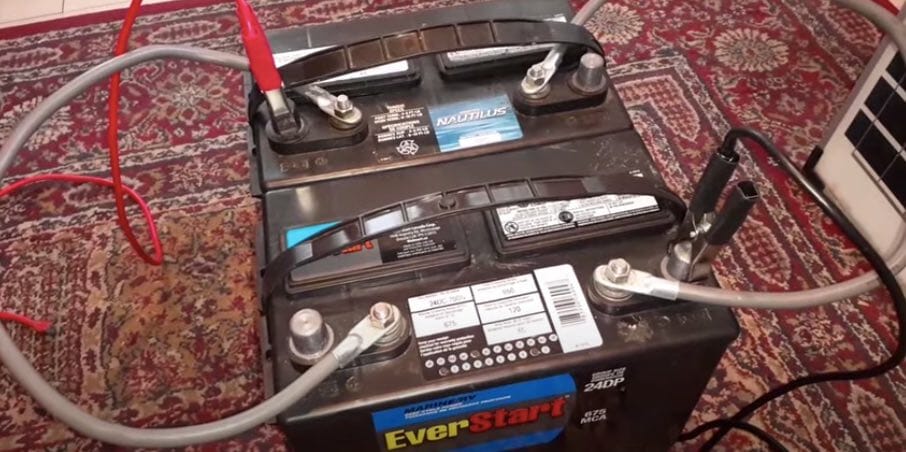What Gauge Wire to Connect Two 12v Batteries in Parallel?
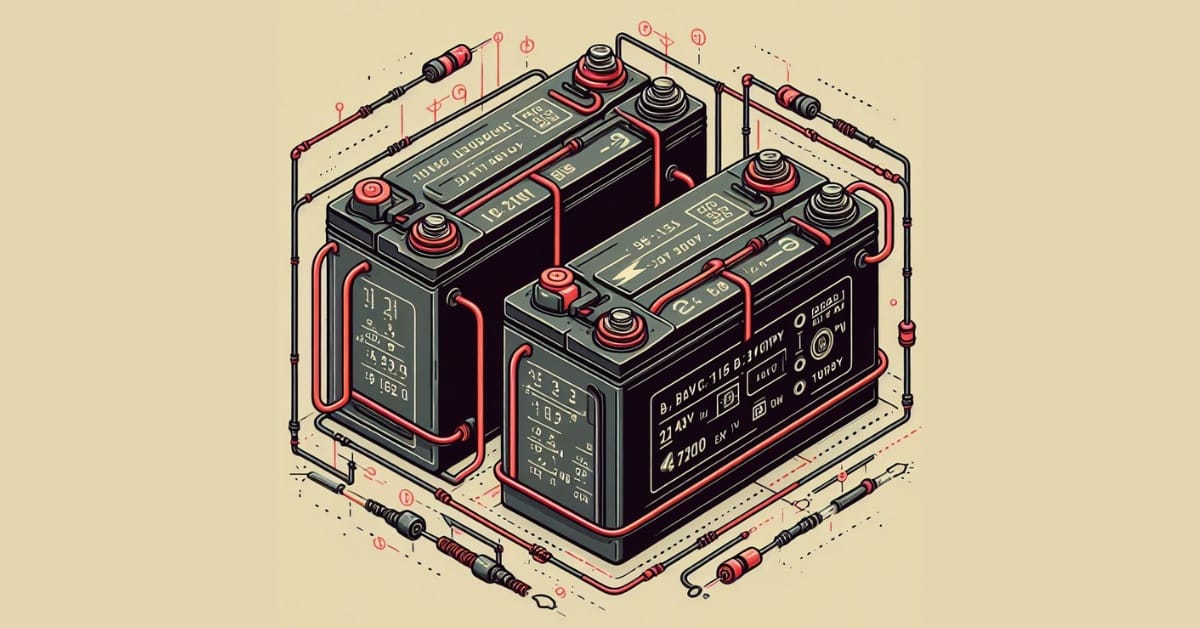
Using the right wire gauge when connecting two batteries in parallel is important.
Using the correct wire gauge in any battery connection increases the system’s efficiency while minimizing risks. Using the wrong gauge wires to link two 12v batteries together can cause shock, damage, and failure of key components. So, what gauge wire should you use to connect two 12v batteries in parallel?
You normally need a wire with a gauge range of 4 to 10 to connect two 12V batteries in parallel. However, 10-gauge wires are common for most RVs and travel trailers, rated for up to 30 amperes. The main factors in gauge determination are the amperage generated by the parallel batteries and the wire length. Linking batteries in parallel does not affect the effective voltage; it only increases the amperage. Hence, thicker wires are required for higher amp values.
Read this guide to know which wire gauges to use in your 12-volt parallel battery connection. I’ve also given more information about the parallel wiring of batteries.
Connecting Two 12V Batteries
Can You Connect Two 12V Batteries?
Yes, you can connect two 12v batteries. This type of connection is safe if you need more voltage (by connecting in series) or amps (by connecting in parallel).
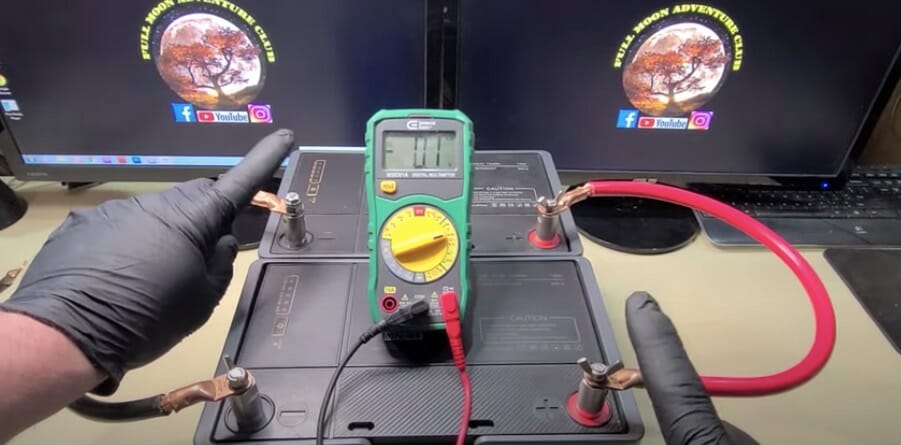
However, for a safe two 12V battery connection, you should use the correct wire gauge to hook onto the batteries’ terminals.
12-volt Parallel Battery Cable
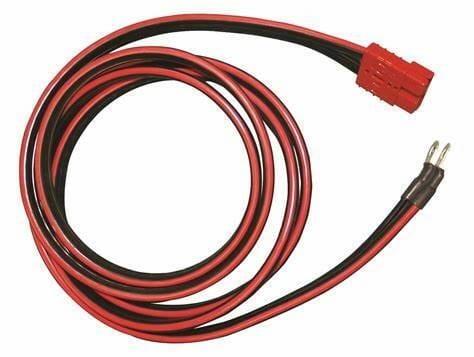
Cables for 12-volt battery connections are widely available in the market.
The cost will not be very high, depending on the length. Generally, the longer the wire, the higher the cost. Also, note that some stores have fixed lengths that you can purchase.
In a solar panel system, several cables are used: adapter cables between the panels and the charge controller, tray cables between the charge controller and battery bank, an inverter cable between the battery bank and inverter, and a battery interconnect cable between the batteries.
We’re considering the latter type when the 2 batteries are wired in parallel. Besides length, the most important thing to consider is the current that will pass through it, i.e., the battery’s maximum continuous charge and discharge current (multiplied by a factor of 1.25 for safety).
Connecting Two Batteries in Parallel
Connecting two 12V batteries in parallel increases the system’s amperage capacity.
It is commonly done in renewable energy systems, RVs, and boats to gain extra runtime while keeping the same voltage. However, a thicker wire is needed in such a setup to ferry the current comfortably; otherwise, you may damage the components or devices in the circuit. Fusing is also important.
Do not go from the open positive to the open negative to avoid a short circuit while connecting. You might also harm your batteries if you proceed that way.
After telling you about the right gauge wire, I will explain parallel wiring in more detail.
The Right Gauge Wire to Use in Parallel Wiring
Let’s consider the right gauge wire when connecting two batteries in parallel.
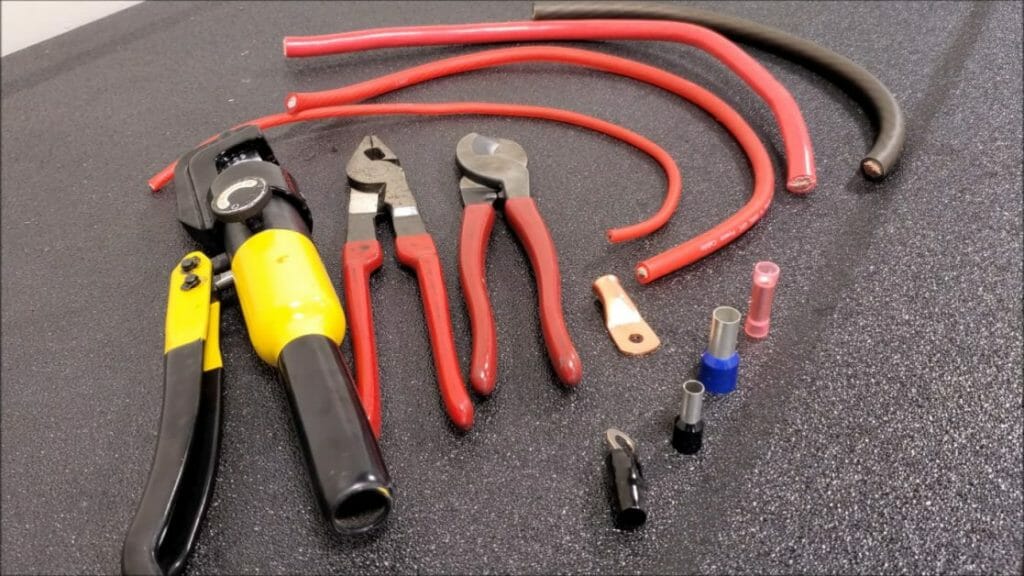
Important Factors
The number of amps flowing through the wires is the determining factor for wire gauges in parallel wiring.
Additionally, the length of the wire in a parallel connection also influences wire gauge choice. If the wire is long, the thickness should be increased. The wire length varies proportionally with its thickness.
Examples for RVs
For example, a 4-foot wire with 30 amps flowing through it requires a 10-gauge wire.
But if the wire length is increased to about 15 feet, you will need an 8 gauge wire instead. If the wire length is further increased to about 20 feet, you will require a 6-gauge wire for the connection, assuming the amount of amps is kept constant. If the length of the wire reaches 30 feet, you will need a 4-gauge wire to connect the batteries in parallel, and so on.
Therefore, RVs’ most common wire gauge ranges between 4 and 10.
In commercial solar panel systems, 10-gauge wires are common for panels over 50 watts, which allow up to 30 amps of current per panel.
Looking Up the Required Gauge
To calculate the required gauge, you need to know the total amperage of the 2 parallel-connected batteries (see how to wire batteries in parallel below) and the distance or length between the battery and the load.
Use our table below to look up the required gauge. For example, if you connect two 60AH 12V batteries in parallel, the amperage will be 60A, providing a higher 120AH total capacity. The cable must, therefore, be capable of handling 60A of current. If the required length is less than 10 feet, you will need an 8-gauge wire.

Securing the Connections
You must also tighten the wire connections besides using the right wires.
Ensure you secure the wires so that they stay firm and undisturbed. If the wires are mishandled or dislocated while a device is operating, they can break loose or cause a shock if they come into contact with a conducting surface.
How to Wire 12-volt Batteries in a Parallel Connection
We will now cover how to wire a 12-volt battery in parallel correctly.
As mentioned before, the voltage will not increase; the amperage will increase. Remember, you should check the right wire gauge to use.
10-gauge wires are rated for up to 30 amps of current. So, if your parallel connection will produce more than 30 amps, you will need a thicker wire gauge. Follow the procedure below to wire two 12-volt batteries in parallel to double the amperage capacity while maintaining the same voltage.
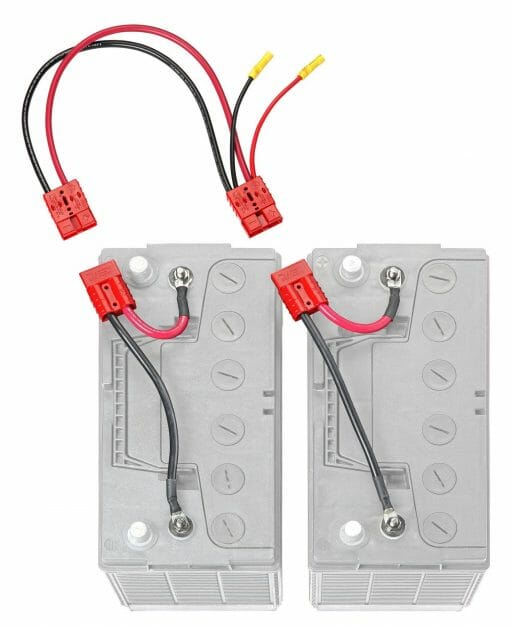
- Align the batteries so the positive terminals are on one end and the negative on the other.
- Use a multimeter to verify each battery’s voltage. Set it to the voltage setting (DCV), and connect the probe leads to the battery’s terminal, matching the polarity. Attach the red lead to the positive or red terminal and the black probe to the battery’s negative or black terminal. Note the voltage values of each of the two batteries, one at a time.
- Repeat the above with the multimeter set to measure current in amps. Connect the two positive terminals of the two batteries with a 10-gauge wire, and connect the two negative terminals with another wire.
- Secure the connections of the two negative and positive terminals. That’s it. You have connected the two batteries in parallel.
- Now verify both batteries’ voltage and current values using the multimeter and compare the readings. You will notice that the voltage value does not change, but the current is greater.
Connecting 2 Batteries in Series
A parallel connection differs from a series connection, which I will briefly describe showing the difference. So, this is how not to connect the wires.
For a series connection (of two 12V batteries), the number of amps rating will not change, but the voltage will increase. In such a connection, you can join a wire from the 1st battery’s negative terminal to the 2nd battery’s positive terminal and use another to connect the 1st battery’s positive terminal to the 2nd battery’s negative terminal.
I recommend cross-connection to verify the voltage of the two 12-volt batteries connected in series. That is, connect the multimeter to the battery terminals diagonally. The cross-connection will make the two batteries share the entire battery bank, giving consistent results.
References
Website Resources:
- ferry. https://www.thrillist.com/travel/nation/9-of-the-world-s-most-epic-ferry-rides
- strategically. https://www.indeed.com/career-advice/career-development/strategic-thinker
Video References:
Jack Of All Trades Master of None
fullmoonadventureclub

